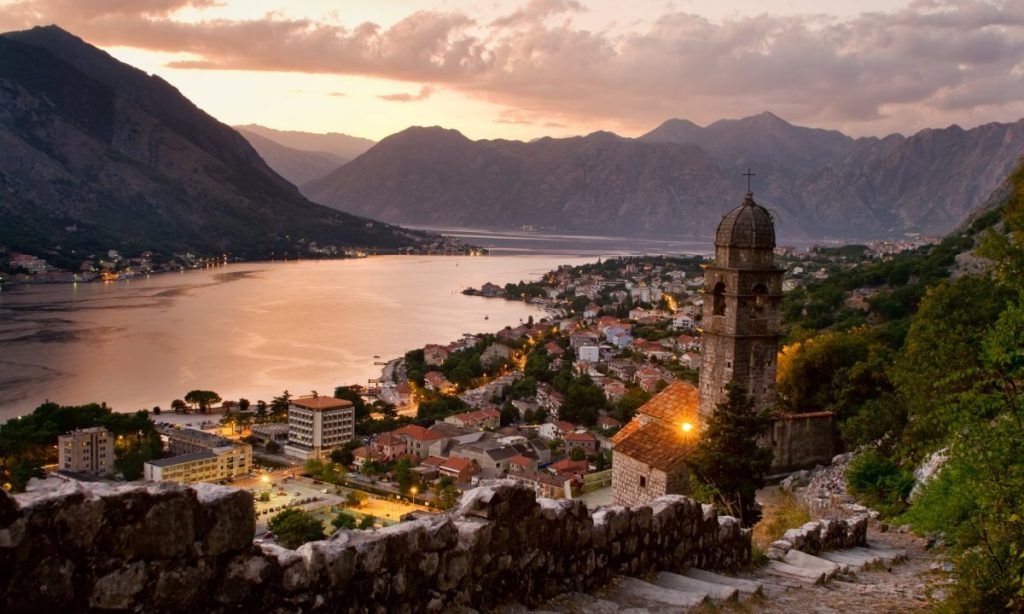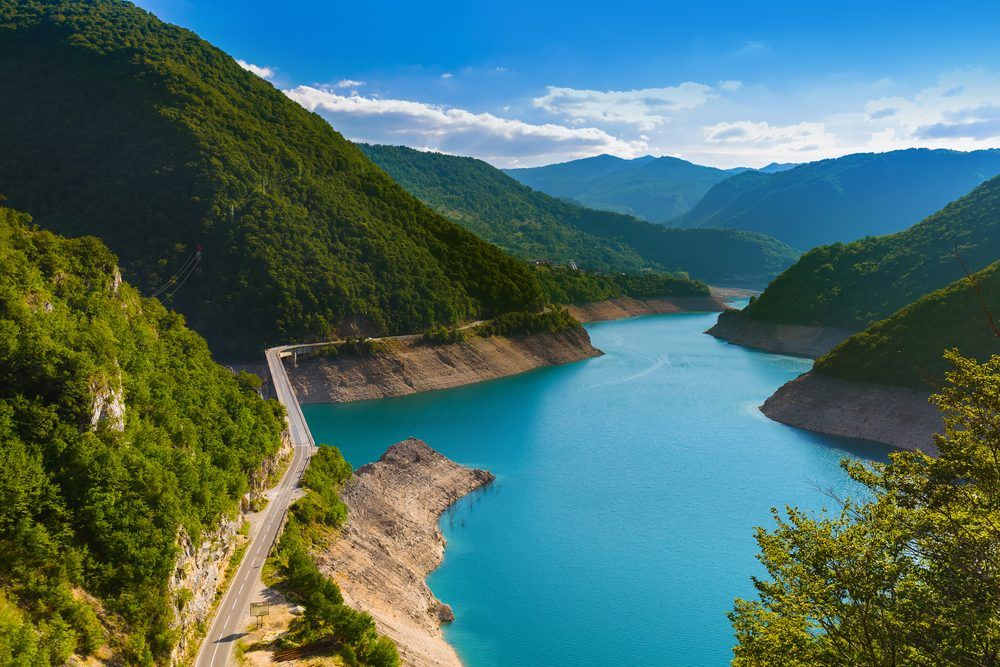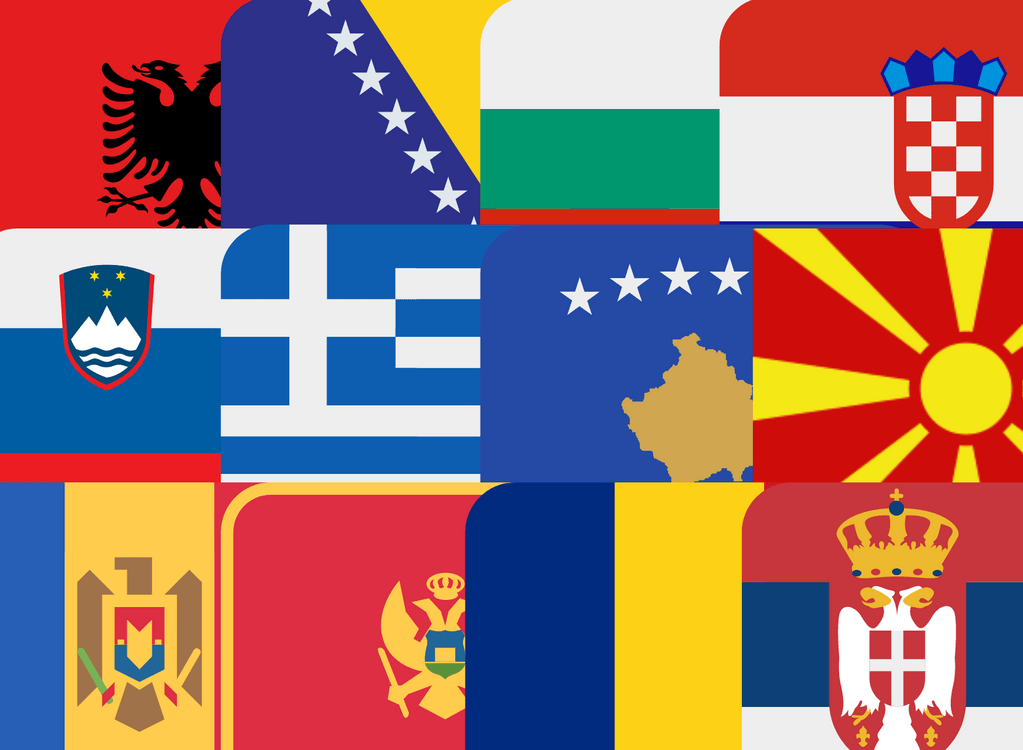The Balkans you don’t know yet
When talking about Europe as a tourist destination, many people think of Paris, Rome or Barcelona. But to the southeast of the continent, a less explored region keeps some of the most impressive landscapes, cities with ancient history and an authenticity that has not yet been consumed by mass tourism. We are talking about the Balkans, an area rich in cultures, languages, religions and, above all, surprises.
In this article, we will explore hidden destinations in the Balkans, places that still retain their local essence and that you can visit without crowds, without spending a fortune and with the certainty of living an unforgettable experience. From a hidden bay surrounded by medieval walls in Montenegro, to a city with thousands of windows in Albania, these destinations stand out for their natural beauty, amazing architecture and the warmth of its people.
Whether you like to walk among historic ruins, get lost in cobbled streets or contemplate breathtaking mountain landscapes, these corners will show you that the Balkans have much more to offer than conventional guides tell. And the best: you can still say that you were there before everyone did.

Kotor (Montenegro): Bay hidden between medieval walls
Nestled in a bay that looks like a fjord but is actually a submerged canyon, Kotor is one of the most photogenic jewels in Europe. Located in the southwest of Montenegro, this small walled town combines sea, mountain and history in one place. And although every year it receives more visitors thanks to the cruises that cross the Adriatic, it is still an underestimated destination in the Balkans outside the high season.
The old town of Kotor, a UNESCO World Heritage Site, is a maze of narrow streets, quiet squares and stone buildings that seem to have stopped time. Stroll through its walls or climb the more than 1,300 steps that lead to the Fortress of San Juan offers unparalleled views of the Montenegrin coastal landscape. In winter or spring, when tourism goes down, the city regains its tranquility and authenticity.
Kotor is also an ideal base for exploring the Montenegrin Riviera region or taking boat trips to the artificial island of Our Lady of the Rocks, opposite the neighboring city of Perast. And all this without the need for a big budget: eating in family taverns, staying in charming guesthouses or moving by local transport is simple and economical.
Mostar (Bosnia and Herzegovina): Ottoman history and cultural fusion
Mostar is a city that excites. Located in southern Bosnia and Herzegovina, it is known worldwide for the Stari Most, a 16th-century Ottoman bridge that connects the two banks of the Neretva River and symbolizes much more than a simple physical connection. The bridge, rebuilt after being destroyed during the war in the 1990s, is now an icon of reconciliation and resilience.
But Mostar is much more than its famous bridge. It is a city where East and West meet, where minarets rise next to bell towers and where you can feel the weight of history at every step. Walking through its ancient bazaar (Kujundžiluk), tasting Bosnian coffee in copper cups, or listening to the call to prayer at sunset while the snow or sun falls, is a deeply enriching experience.
In addition, being a less saturated destination than Dubrovnik or Split, traveling to Mostar is still very accessible. It can be easily reached by train or bus from Sarajevo or the Croatian coast, and the cost of living is still low. Cheap accommodation, delicious local cuisine and a great cultural offer make Mostar a must for those who want to discover the authenticity of the Balkans.
Berat (Albania): The city of a thousand windows
Located on the banks of the Osum River, Berat is one of the oldest and most picturesque cities in Albania. Known as the “city of a thousand windows”, this nickname comes from the traditional Ottoman houses that climb the hills and whose wooden balconies seem to observe each visitor with curiosity. Declared a World Heritage Site by UNESCO, Berat is a true open-air museum.
The city is divided into three historic neighborhoods: Mangalem, Gorica and Berat Castle. The first, of Muslim roots, stands out for its crowded white houses; the second, Orthodox Christian, is right in front, and the third crowns the city from the top. The castle is not only a monumental structure, but also an inhabited neighborhood, where families still live between the centuries-old walls. Exploring its cobbled alleys and visiting small Byzantine churches hidden between the stones is like traveling back in time.
Berat is also an excellent place for those looking for authentic experiences at low prices. The local cuisine, a delicious mixture of Balkan and Mediterranean influences, is very economical. And family accommodations – from hostels to guesthouses in restored old Ottoman residences – offer genuine hospitality at very affordable prices.
Unlike other more promoted cities in Albania such as Saranda or Tirana, Berat maintains a quieter tourism, ideal for those who want to know hidden destinations in the Balkans without haste or crowds.
Ohrid (North Macedonia): Churches and crystal clear water
On the shores of the deepest lake in the Balkans is Ohrid, a historical jewel of North Macedonia that combines cultural heritage and natural beauty like few places in Europe. Lake Ohrid, shared with Albania, is of tectonic origin and is home to unique species, which has earned it to be a World Heritage Site both for its ecosystem and for its historical value.

The city of Ohrid was one of the main religious and cultural centers of the Orthodox world. It is said that it came to have 365 churches, one for each day of the year. Although many have disappeared, today it is still possible to visit architectural jewels such as the church of San Juan Kaneo, located on a cliff with panoramic views of the lake, or the Monastery of San Naum, in the extreme south, surrounded by lush nature.
Ohrid is a perfect destination both for those looking for a cultural trip and for those who want tranquility. The walk through its old town reveals traditional Balkan houses, cobbled streets and a leisurely atmosphere, very different from the rhythm of larger cities. In summer, the place is animated with concerts and festivals, but in other seasons, such as autumn or spring, it remains serene and accessible.
In addition, traveling to Ohrid is affordable: prices in restaurants, accommodation and local transport remain low compared to other European destinations. Here you can enjoy a complete getaway – with history, landscapes and good food – without having to spend a lot.
Tara Canyon (Montenegro): Adventure in the Grand Canyon of Europe
For nature and adventure lovers, the Tara River Canyon in Montenegro is a must-see destination. Considered the second deepest canyon in the world after the Grand Canyon of Colorado, and the deepest in Europe, it reaches up to 1,300 meters deep in some sections and extends for more than 80 kilometers through the Durmitor National Park.
The Tara Canyon is not only impressive for its size, but for its biodiversity and the purity of its waters, recognized as some of the cleanest on the continent. Here you can practice rafting, hiking, mountain biking and pure nature photography. Rafting on the Tara River, especially between May and September, is one of the most popular and exciting activities, although in low season you can take walks through its viewpoints without crossing paths with more than a couple of travelers.
Unlike other adventure areas in Europe, prices here remain reasonable. There are camps and rustic cabins by the river, where you can sleep with forest views and wake up to the sound of the water. There are also local tours operated by locals, which ensures a more authentic and close experience.
Visiting Tara is to immerse yourself in the wildest and most virgin version of the Balkans, an ideal getaway for those looking for disconnection, adrenaline and landscapes that do not yet appear in the most common postcards.
Tips for traveling cheap through the Balkans by public transport
Getting around the Balkans is easier than many imagine, although it requires some planning if you want to do it on a small budget. Here are some practical tips to make the most of the experience:
Regional public transport: Trains and buses are the cheapest and most common way to get around. Although they are not always fast, they are safe and allow you to enjoy the landscape. Companies such as FlixBus and national lines connect cities between neighboring countries well.
Avoid taxis at borders: Some international connections are not well covered by direct transport. In those cases, it is better to walk between borders or use local minibuses instead of taxis, which are usually expensive and not always reliable.
Use local SIM cards: Data cards are cheap and will allow you to check schedules, maps and book accommodation on the go. This is very useful in less touristy areas where English is not common.
Stay in guesthouses or family apartments: In addition to being cheaper, they offer an experience closer to the local culture. In many cases, the hosts will help you with advice and even transportation.
Travel out of high season: Spring and autumn are ideal for touring the Balkans. The weather is pleasant, there are fewer tourists and prices drop significantly.
Travel before everyone arrives
The Balkans are changing. More and more travelers are discovering its potential, its cultural wealth, its imposing landscapes and its hospitality. But it is still possible to tour its most beautiful corners without crowds, without spending a fortune and with the feeling of discovering something genuine and authentic.

From the medieval bay of Kotor to the deep canyon of the Tara, through stone cities, transparent lakes and centuries-old churches, these underestimated jewels in the Balkans offer a diversity of experiences that are difficult to match. They are destinations that invite quiet exploration, connection with people, and enjoying Europe from a different perspective.
Traveling through this region is not only a geographical tour, but a journey to the heart of a less known, more authentic, more human Europe. Do it now, before the whole world sets its eyes on her.
